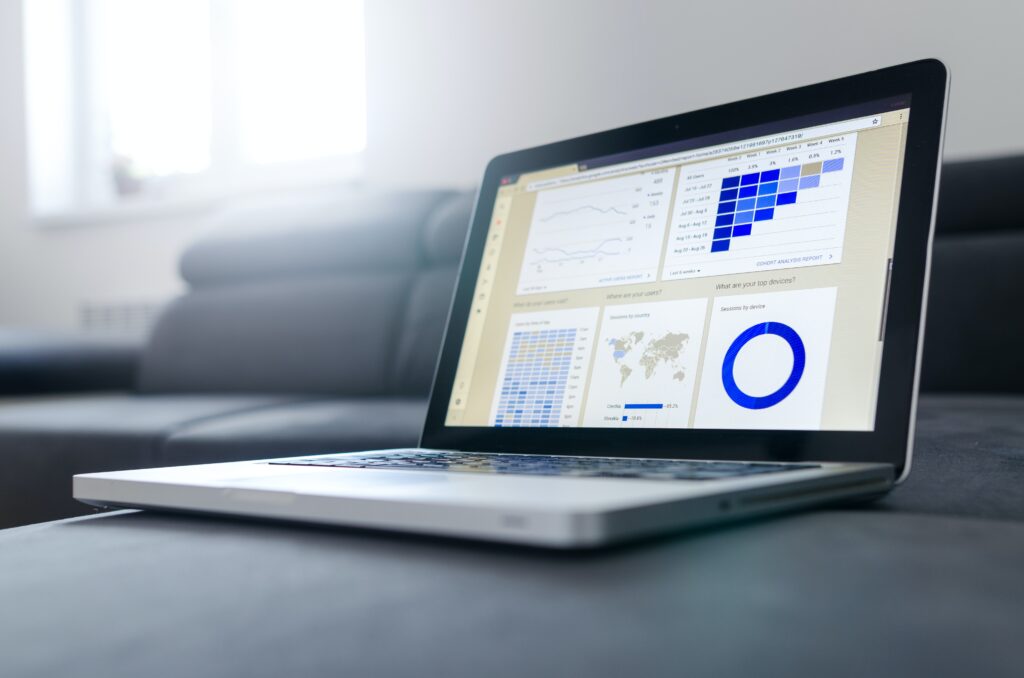In this article, we will explore the reasons why using a temperature and humidity data logger is essential. You will learn about the importance of monitoring temperature and humidity levels in various industries and environments. Additionally, we will discuss how data loggers can help in maintaining product quality, ensuring regulatory compliance, and improving overall efficiency. By the end of this article, you will have a comprehensive understanding of why using a temperature and humidity data logger is a wise investment.
What is a Temperature and Humidity Data Logger?
A temperature and humidity data logger is a device that measures and records temperature and humidity levels in a given environment over a period of time. It is commonly used in various industries to monitor and maintain specific temperature and humidity conditions.
Definition and Purpose
A temperature and humidity data logger is a compact device equipped with sensors to accurately measure and record temperature and humidity levels. It is designed to operate in a wide range of environments and provides valuable data for analysis and monitoring purposes.
The primary purpose of a temperature and humidity data logger is to ensure the preservation and quality of products, equipment, and environments that are sensitive to temperature and humidity fluctuations. By continuously monitoring these conditions, data loggers help prevent spoilage, product degradation, and damage.
How it Works
Temperature and humidity data loggers work by utilizing sensors to measure the temperature and humidity levels in the surrounding environment. These sensors capture data at regular intervals, which is then stored in the data logger’s memory.
The data logger can be set up to record data at specific time intervals, such as every few minutes or hours, depending on the application. Some advanced data loggers also have the capability to transmit real-time data wirelessly to a computer or mobile device for immediate analysis.
The collected data can be downloaded and analyzed using specialized software, allowing users to identify any temperature or humidity fluctuations, create reports, and make informed decisions based on the findings.
Benefits of Using a Temperature and Humidity Data Logger
Using a temperature and humidity data logger offers several benefits across various industries. Let’s explore some of the key advantages below:
Accurate Monitoring of Environmental Conditions
One of the main benefits of using a temperature and humidity data logger is its ability to provide accurate and reliable monitoring of environmental conditions. These data loggers are calibrated to provide precise measurements, ensuring that the recorded data is trustworthy and can be used for regulatory compliance and quality control purposes.
Ensuring Product Quality and Safety
In industries such as food and beverage or pharmaceuticals, maintaining specific temperature and humidity conditions is critical for ensuring product quality and safety. Temperature and humidity data loggers help to monitor and control these conditions, minimizing the risk of spoilage, degradation, or contamination.
For example, in the food industry, perishable items can easily spoil if stored at incorrect temperatures. By using data loggers, businesses can ensure that their products are stored within the optimal temperature range, reducing waste and maintaining product quality.
Compliance with Regulatory Standards
Many industries are subject to regulatory requirements regarding temperature and humidity control. Temperature and humidity data loggers play a crucial role in meeting these standards and providing documented evidence of compliance.
For instance, in the healthcare sector, pharmaceutical products and vaccines need to be stored within specific temperature ranges to maintain efficacy and safety. Using data loggers ensures that the required temperature conditions are consistently met, allowing businesses to comply with strict regulations.
Early Detection of Issues
Temperature and humidity data loggers can serve as an early warning system, alerting users to potential issues before they escalate. By monitoring the data collected over time, deviations from the desired temperature and humidity conditions can be detected, enabling proactive measures to be taken.
For instance, in HVAC systems, data loggers can help identify abnormal temperature or humidity fluctuations, indicating a potential equipment malfunction. This early detection allows for timely maintenance or repairs, reducing the risk of costly breakdowns or downtime.

Applications of Temperature and Humidity Data Loggers
Temperature and humidity data loggers find applications in a wide range of industries and sectors. Let’s explore some of the key areas where these data loggers are frequently used:
Food and Beverage Industry
In the food and beverage industry, temperature and humidity control is crucial for maintaining the quality and safety of perishable products. Data loggers are used in various stages of food production, transportation, and storage to ensure compliance with regulatory standards and guarantee food safety.
For example, data loggers may be used to monitor the temperature of refrigeration units storing perishable items such as meat, dairy products, or vaccines. This helps to identify any temperature fluctuations that could compromise the quality or safety of the products.
Pharmaceutical Industry
The pharmaceutical industry heavily relies on temperature and humidity control to ensure the integrity and efficacy of drugs and vaccines. Temperature and humidity data loggers are used to monitor storage conditions throughout the entire supply chain, from manufacturing to distribution.
For instance, during the transportation of pharmaceutical products, data loggers can provide real-time temperature monitoring and alerts, ensuring that the temperature remains within the acceptable range. Any deviations can prompt immediate action and prevent potential damage to the products.
Warehousing and Storage
In warehousing and storage facilities, temperature and humidity data loggers play a crucial role in maintaining optimal conditions for various products. From perishable goods to sensitive electronics, data loggers help ensure that the appropriate temperature and humidity levels are maintained to prevent damage or product degradation.
For example, in cold storage facilities, data loggers can monitor the temperature and humidity of the storage area, alerting personnel if there are any significant fluctuations. This allows for timely corrective actions, preventing spoilage or damage to the stored goods.
HVAC Systems
Temperature and humidity data loggers are widely used in heating, ventilation, and air conditioning (HVAC) systems to ensure efficient operation and optimal comfort levels. By continuously monitoring the temperature and humidity in different spaces, data loggers enable HVAC systems to adjust settings and maintain desired conditions.
For instance, in commercial buildings, data loggers can provide valuable insights into the temperature and humidity patterns of different areas. This information allows for better HVAC system optimization, resulting in energy savings, improved occupant comfort, and reduced maintenance costs.
Research and Development
Temperature and humidity data loggers are also extensively utilized in research and development settings, where precise control and monitoring of environmental conditions are essential. From scientific experiments to material testing, data loggers help ensure consistent and accurate conditions throughout the process.
For example, in climate chambers or testing facilities, data loggers are used to track temperature and humidity during experiments or tests. This data is vital for validating results, ensuring reproducibility, and maintaining quality standards.
Factors to Consider When Choosing a Temperature and Humidity Data Logger
Selecting an appropriate temperature and humidity data logger for your specific needs is crucial to ensure accurate monitoring and reliable data. Here are some key factors to consider when choosing a data logger:
Measurement Range and Accuracy
The measurement range and accuracy of a data logger determine its suitability for specific applications. Consider the temperature and humidity ranges you need to monitor and choose a data logger that can accurately measure within those ranges.
Data Storage and Retrieval
Opt for a data logger with sufficient storage capacity to record the required data over your desired monitoring timeframe. Additionally, consider how easily the data can be retrieved from the data logger, whether it requires manual downloading or offers wireless connectivity for real-time access.
Battery Life and Power Options
Battery life is an essential consideration, particularly if the data logger needs to operate in remote or inaccessible locations. Choose a data logger with a long-lasting battery or consider options with alternative power sources, such as solar or external power supplies.
Software and Compatibility
Ensure that the data logger is compatible with software that allows you to analyze and interpret the collected data effectively. Check if the software provides features like data visualization, report generation, and data export capabilities for further analysis.
Durability and Waterproofing
Consider the environmental conditions in which the data logger will be used and choose a model that is durable and waterproof, if necessary. Some applications, such as outdoor monitoring or industrial environments, may require rugged data loggers that can withstand harsh conditions.

How to Properly Use a Temperature and Humidity Data Logger
Proper usage of a temperature and humidity data logger is crucial to ensure accurate monitoring and reliable data. Here are some essential guidelines to follow when using a data logger:
Placement and Mounting
Place the data logger in an area where it can accurately capture temperature and humidity readings representative of the desired monitoring area. Ensure that the logger is not exposed to direct sunlight, drafts, or other factors that may alter the readings.
Mounting the data logger securely, using appropriate mounting accessories, can help maintain its position and prevent any interference with the collected data.
Calibration and Validation
Regular calibration of the data logger is essential to ensure accurate measurements. Follow the manufacturer’s guidelines for calibration frequency, and use traceable calibration equipment to validate the accuracy of the data logger.
Additionally, validate the data logger’s performance by comparing its readings against a reference instrument to ensure consistency and reliability.
Data Analysis and Interpretation
Download the recorded data from the data logger and use compatible software to analyze and interpret the data. Look for any patterns, trends, or deviations from the desired conditions.
Visualization tools, such as graphs or charts, can help identify any temperature or humidity fluctuations over time. Analyze the data to identify any potential issues or areas that may require corrective actions.
Maintenance and Calibration of Temperature and Humidity Data Loggers
Proper maintenance and regular calibration of temperature and humidity data loggers are essential to ensure accurate and reliable measurements. Here are some key maintenance and calibration practices to follow:
Cleaning and Storage
Regularly clean the data logger to ensure accurate readings and prevent any buildup of dust or debris. Use a soft, lint-free cloth or a non-abrasive cleaning agent to clean the external surfaces of the data logger.
Proper storage is also crucial to maintain the longevity and performance of the data logger. Store the data logger in a clean, dry, and dust-free environment, following the manufacturer’s guidelines for temperature and humidity conditions.
Calibration Schedule
Establish a calibration schedule based on the manufacturer’s recommendations and industry best practices. Regularly calibrate the data logger using calibrated reference instruments to ensure accurate measurements.
Depending on the application and industry requirements, calibration may be required annually or more frequently. Follow the established calibration schedule to maintain the data logger’s accuracy and reliability.
Certification and Traceability
Consider obtaining certification for the data logger to ensure compliance with regulatory standards and industry requirements. Certification provides evidence of the data logger’s accuracy and traceability back to national or international measurement standards.
Certification helps establish confidence in the data logger’s measurements, particularly in industries where accuracy and traceability are critical, such as pharmaceuticals or healthcare.

Common Challenges and Troubleshooting Tips
While temperature and humidity data loggers are designed to be reliable and accurate, occasional challenges and issues may arise. Here are some common challenges and troubleshooting tips:
Device Malfunction
If the data logger malfunctions or stops recording data, check the battery status and replace the batteries if necessary. Ensure that the data logger is properly configured and that the memory has not reached its capacity.
If the issue persists, consult the manufacturer’s documentation or reach out to their technical support for further assistance.
Data Loss
In the event of data loss, check if the data logger has been properly configured to record and store data. Make sure the memory capacity is sufficient for the desired monitoring timeframe and that the data logger is regularly downloaded to avoid potential data loss.
Consider backing up the data on an external device or cloud storage to prevent data loss in case of any unforeseen circumstances.
Connectivity Issues
If the data logger utilizes wireless connectivity for data transmission, ensure that the data logger is within the range of the receiving device. Check the connectivity settings and ensure that the data logger and receiving device are paired correctly.
If connectivity issues persist, check for any signal interference or obstacles that may affect the wireless connection. Relocate the data logger or the receiving device if necessary to establish a stable connection.
Cost Considerations and Return on Investment
While the initial investment in temperature and humidity data loggers may vary depending on the specific requirements and features needed, the long-term savings and return on investment (ROI) can be substantial. Here are some considerations:
Initial Investment
The cost of temperature and humidity data loggers can vary depending on the brand, model, features, and quantity required. Consider your specific needs and budget constraints when choosing a data logger.
It is important to balance cost considerations with the features and accuracy required for your application. Opting for a lower-cost data logger may compromise accuracy and data reliability.
Long-term Savings
Using temperature and humidity data loggers can result in significant long-term savings. By ensuring product quality, reducing spoilage or damage, and preventing regulatory non-compliance, businesses can avoid costly losses associated with product recalls, fines, or customer dissatisfaction.
Risk Reduction
Using temperature and humidity data loggers helps mitigate risks associated with temperature and humidity fluctuations. Proactively monitoring and controlling these conditions minimizes the risk of product degradation, spoilage, or equipment malfunctions.
By reducing risks and potential losses, businesses can enhance their reputation, improve customer satisfaction, and avoid costly legal issues.
Latest Technological Advances in Temperature and Humidity Data Loggers
Temperature and humidity data loggers continue to evolve, incorporating advanced features and technologies to enhance their functionality. Here are some of the latest technological advances in the field:
Wireless and IoT Integration
Wireless connectivity enables real-time data monitoring and remote access to temperature and humidity data. Data loggers with wireless capabilities can transmit data to computers or mobile devices, allowing for immediate analysis and proactive decision-making.
Furthermore, integration with the Internet of Things (IoT) enables seamless connectivity and integration with other smart devices, systems, or platforms. This integration enables automated data collection, analysis, and alerts, further enhancing efficiency and ease of use.
Real-time Monitoring and Alerts
Data loggers with real-time monitoring capabilities provide instant access to temperature and humidity conditions, allowing for immediate action when deviations occur. Real-time alerts notify users of any critical conditions, ensuring timely intervention and preventing potential damage or product loss.
Cloud-based Data Management
Cloud-based data management allows for centralized storage, analysis, and accessibility of temperature and humidity data. Data loggers can directly upload recorded data to the cloud, eliminating the need for manual downloading and providing secure and scalable data storage solutions.
Cloud-based platforms also offer advanced data visualization tools, collaboration capabilities, and seamless integration with third-party software or analytics platforms, enhancing data analysis and interpretation.
Conclusion
Temperature and humidity data loggers are essential tools for monitoring and maintaining optimal conditions in various industrial and commercial settings. Their accurate measurements and reliable data provide valuable insights into environmental conditions, enabling businesses to ensure product quality, comply with regulatory standards, and mitigate risks.
By investing in temperature and humidity data loggers, businesses can enhance their operational efficiency, reduce losses, and improve customer satisfaction. Choosing the right data logger that suits specific requirements, maintaining it properly, and utilizing the available data for analysis and proactive decision-making are key to maximizing the benefits and value of these essential devices.

